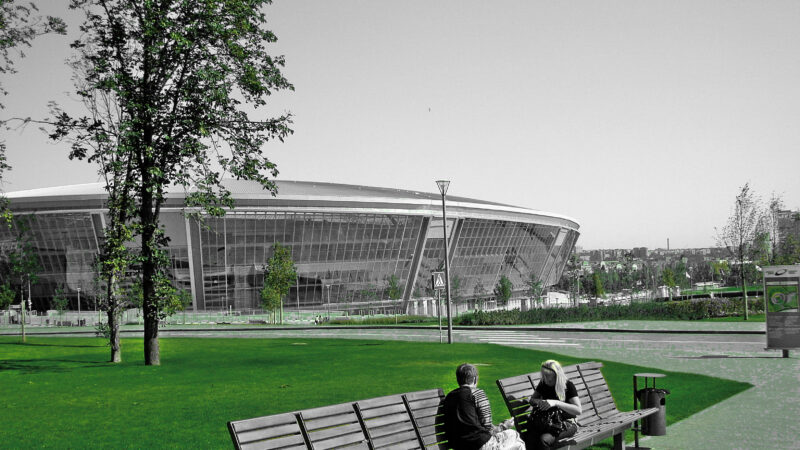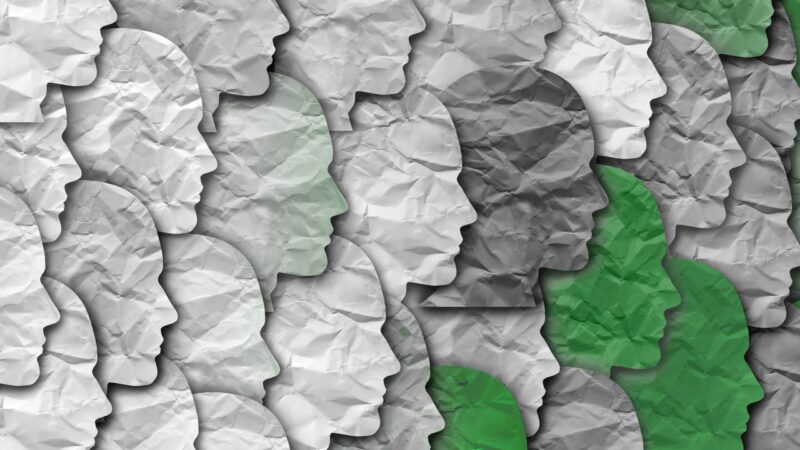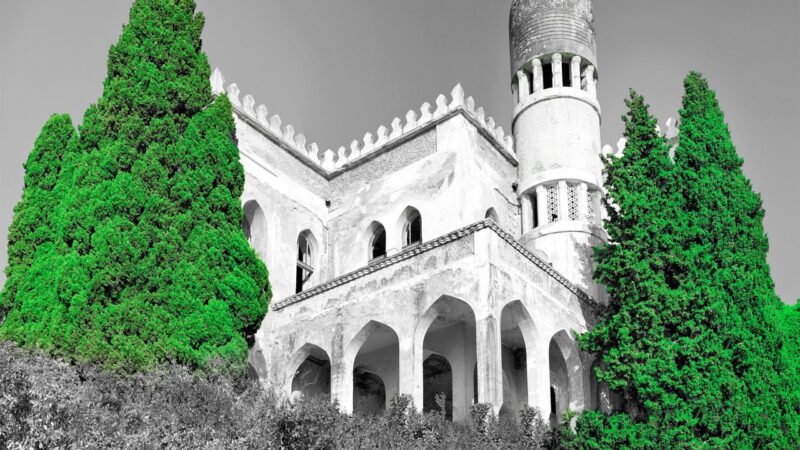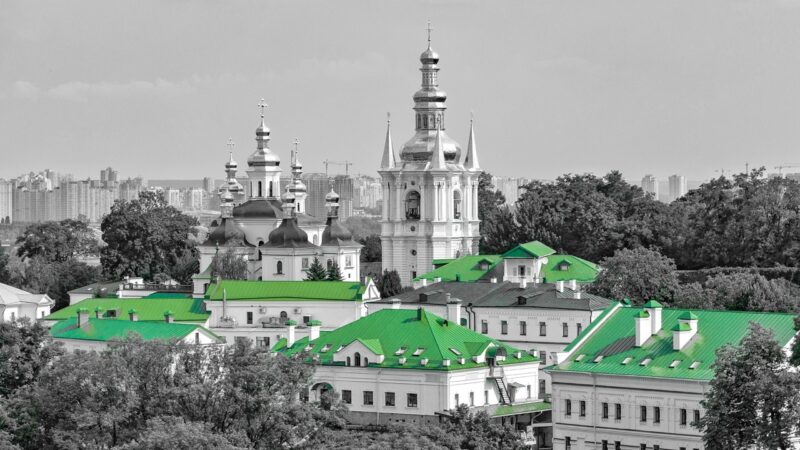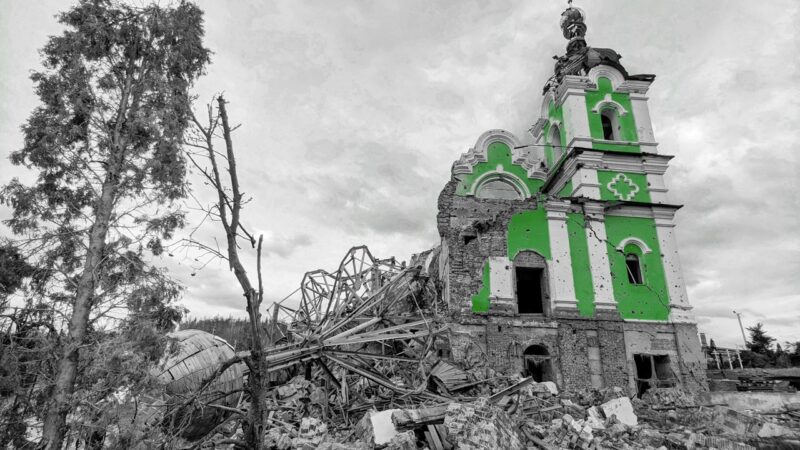From demanding autonomy to fighting for survival after annexation in 2014: The national movement of the Crimean Tatars
Background
The political history of the Crimean Tatars begins in the first half of the fifteenth century, when Haji-Girei (1397–1441) proclaimed himself ruler and initiated the Crimean Khanate. The young khan was born in Lithuania into a family of refugees from the Golden Horde that was admitted by the Grand Duke of Lithuania in exchange for military service. His grandfather, Tash Timur, was a descendant of Genghis Khan and a governor of the Crimean ulus. However, after the takeover of the Golden Horde by Tamerlane, the father of Haji-Girei took refuge in Lithuania.
In the fourteenth century the Golden Horde lost its former power and was torn apart by internal conflicts. The Crimean beys profited from this situation by separating from the failing empire. The beys of the Shirin and Barin families sent a message to Casimir IV requesting that Haji-Girei, who was sheltered in his court, return to Crimea. With the support of the Grand Duke of Lithuania and the powerful Crimean beys, Haji defeated his enemies and declared himself the khan of an independent state [1].
Ruled by the Girei dynasty, the Crimean Khanate existed for over three hundred forty years. Although for most of this time it was a vassal of the Ottoman Empire, it played a decisive role in the ethnogenesis of the Crimean Tatars. After Russia’s first annexation of Crimea in 1783 a period began of over a century and a half of Tatar depopulation in Crimea, caused by wars and persecution and culminating in a mass deportation in 1944. A crucial consequence of the expulsion by order of Joseph Stalin of the entire Crimean Tatar population was the destruction of their material culture. Nevertheless, in exile the Crimean Tatars organized a huge dissident movement and fought for repatriation. The peaceful nature of the movement gave them widespread publicity both in the USSR and abroad.
Development of education and the fight for political representation
After the collapse of the Soviet Union and the mass repatriation to Crimea of its indigenous nation, the Crimean Tatar movement created its own representative institutions within the Ukrainian oblast—the Kurultai (Qurultay) and Mejlis. From the beginning, the main objectives of these institutions were to revive national culture, language, and education, as well as coordinate the settlement process of returning Tatars to Crimea. The newly created representative organizations of the Crimean Tatars had to confront Russian opposition and separatism on the peninsula, which erupted after the declaration of Ukraine’s independence. Russians have been the dominant nationality in Crimea since the early 1990s—58.5 percent of the population according to the 2001 census; ethnic Ukrainians are the second-largest group at 24.4 percent, while Crimean Tatars make up only 12.1 percent [2]. With such significant population disparity, the Crimean Tatars did not have sufficient political power to thwart the attempted secession of Crimea from Ukraine provoked by pro-Russian forces led by Yuri Mieshkov, using parliamentary manipulations. After changing the constitution of the autonomous republic and holding a presidential election in 1994, the separatists aligned Crimea with the Moscow time zone. The next planned steps were to replace the Ukrainian currency with the Russian ruble and introduce dual citizenship, followed by (re)unification of Crimea with the Russian Federation. This political crisis was averted with the promulgation in 1998 of a new constitution of the Autonomous Republic of Crimea (ARC), which was the result of a compromise between the political leadership in Kyiv and in Simferopol. However, this key framework document ignored the demands and expectations of the Crimean Tatar national movement and in fact deprived Crimean Tatars of the opportunity to participate in the social and political life of their republic [3]. After 2010, a campaign was launched in Crimea to discredit Mustafa Jemilev (Dzhemiliev), chairman of the Mejlis. Baseless information about corruption appeared in the local media, and political rivals accused the Crimean Tatar leader of disregarding the impoverishment of his compatriots.
In considering the activity of representative institutions of the Crimean Tatars from the early 1990s until Russia’s annexation of the peninsula in 2014, let us focus on the principle of national self-determination that was promoted by the leaders of the Crimean Tatar movement during this time period. The basic law of the Mejlis describes the objectives and tasks of that parliamentary organization, namely:
The main goal of the Mejlis is to eliminate the consequences of the genocide committed by the Soviet state against the Crimean Tatars, restore the national and political rights of the Crimean Tatar nation, and exercise their right to free national self-determination on their historical territory [4].
Eliminating the “consequences of the genocide” should be understood, inter alia, to include activities aimed at rebuilding the destroyed material culture, restoring ethnic street and town names used before the deportation of 1944, improving the economic situation of the community, and repatriating all Tatars to Crimea. In addition, the Mejlis constitution advocates the right of the Crimean Tatars to national and territorial autonomy within Ukraine, citing the Charter of the United Nations [5]. Considering the Crimean Tatars as an indigenous people and thus the subject of international arrangements aimed at protecting this specific type of minority group, their demanded a special status for Crimea, which predictably worried the neophyte political elites in Kyiv and at regional levels across the south. The Ukrainian authorities feared a possible increase in separatist sentiments in other parts of the country, for example in Transcarpathia, but above all they wanted to prevent the radicalization of pro-Russian activists on the peninsula.
In 1999 an attempt to formalize the dialogue with representatives of the Crimean Tatar community was made by President Leonid Kuchma, who established a Council of Representatives of the Crimean Tatar People. This body’s main function was to advise on issues concerning the integration of Crimean Tatars into Ukrainian society. Also, the idea was to embed the Mejlis in Ukraine’s legal system [6]. The next Ukrainian president, Viktor Yushchenko, did not pay attention to maintaining the dialogue with the Crimean Tatars despite the mass support they gave him during the elections. His successor, Viktor Yanukovych, tried to interfere in the composition of the Council, which ended with the withdrawal of the Mejlis representatives and a loss of legitimacy in the eyes of most Tatars.
The central authorities’ inconsistent policy toward the Crimean Tatars since the 1990s has resulted in numerous problems that plague the community. The biggest issue had to do with the granting of building plots for the Crimean Tatar returnees. Confronted with refusals and excessive delays by the authorities, the Tatars initiated samozakhvaty—unauthorized takeovers of unoccupied state land parcels in the suburbs of Simferopol [7]. Such actions often led to increased ethnic tensions and use of violence by the authorities. Another problem was the high unemployment and relatively low material status of the Crimean Tatar community, which lives mainly in villages and small towns in the steppe part of the peninsula [8]. According to the leaders of the Mejlis, the source of these problems was the relatively low proportionate representation of Crimean Tatars in the local administration. This state of affairs then deteriorated significantly under the rule of the Party of Regions and Ukrainian President Viktor Yanukovych [9].
Crimean Tatars against the annexation of Crimea: Attitudes and consequences
The Crimean Tatar national movement supported the ideas of the Ukrainian Revolution of Dignity. Starting in autumn 2013, dozens of Tatar activists participated in mass anti-government protests in the squares of Kyiv, Simferopol, and other Ukrainian cities. On 26 February 2014, the dramatic events occurred in the Autonomous Republic of Crimea, Mejlis activists headed by chairman Refat Chubarov called a mass protest outside the building of the Supreme Council of the ARC. The purpose of the demonstration was to prevent the planned announcement of the secession of Crimea from Ukraine that had been prepared by a group of pro-Russian deputies. Thanks to quick mobilization, supporters of the Mejlis and other pro-Ukrainian residents of the peninsula managed to interrupt the parliamentary session and thwarted the separatist plans. The next day, a group of unidentified armed men attacked the government buildings in Simferopol, the capital of the ARC. At the same time, the media began to report that Russian troops were invading the territory of Crimea and that so-called “little green men” were blockading Ukrainian military sites. At first, Moscow denied the presence of the Russian army on the peninsula, but after the ultimate annexation of Crimea, President Vladimir Putin admitted that it had been a military operation, prepared in advance and under his command [10].
After the establishment of Russian rule in Crimea, repressions began against pro-Ukrainian activists. The first victim, who also became a symbol of the new order under the occupation, was a thirty-eight-year-old Crimean Tatar, Reshat Ametov, kidnapped in early March by the so-called “Crimean Self-Defense,” a paramilitary group under the control of Sergey Aksyonov. In the following years, the number of mysterious kidnappings and court hearings increased, resulting in long-term prison sentences in Russian jails.
In addition to the persecution of civil activists and religious minorities, the Russian authorities in Crimea limited the freedom of the mass media. In 2014–15, the local branch of the state radio and television agency was taken under control, and the occupiers cut off the Ukrainian media on the peninsula. In November 2014, the Russian parliament adopted a law obliging all the mass media in Crimea to re-register. From over 3,000 media outlets operating there at the time, only 232 renewed their licenses. Under vague pretexts, the re-registration of the ATR Crimean Tatar television station was refused and their editorial offices soon had to transfer to Kyiv. The Russian authorities in Crimea began blocking Ukrainian internet portals and repressing independent journalists, such as Mykola Semena.
The activity of religious institutions was also restricted. One of the manifestations of this policy was the de facto subordination of the Spiritual Direction of the Muslims of Crimea, which oversaw most mosques and over 350 Muslim communities in the peninsula. Before the annexation by Russia, the Direction had worked closely with the Crimean Tatar self-government; its spiritual leader (mufti) was a member of the Mejlis. But the Crimean authorities constantly increased pressure and eventually forced mufti Emirali Ablayev to obey. Some of the believers did not accept the new reality and were subjected to accusations of religious extremism, resulting in extended prison terms [11].
Representative institutions of the Crimean Tatars were also victimized after the annexation. In response to the fiasco of the negotiations between the Russian authorities and the leadership of the Mejlis, which demanded the restoration of Ukraine’s territorial integrity, a court in Crimea banned Mustafa Jemilev and Refat Chubarov from entering the peninsula. Two years later, the Mejlis was outlawed in Russia and members of the organization were repressed. After having their national representative institutions de facto paralyzed, Crimean Tatars had to redefine their political objectives and adapt to current political realities.
Objectives of the Tatar national movement in the new political reality
From the early 1990s until 2014, the most important goals of the Crimean Tatar movement were to revive their national culture and language as well as to complete the repatriation process. In order to implement these goals, Crimean Tatars conducted a dialogue with the authorities in Kyiv, demanding greater participation in the administration in Crimea. The strategic objective was to create a Crimean Tatar national autonomy within Ukraine. However, the Tatar leaders did not overly push this demand, mindful of the potential deterioration of interethnic tensions and wanting to avoid provoking pro-Russian attitudes.
Although the demand for autonomy was not rejected after Russia’s illegal annexation of Crimea, other problems came to the fore. One problem was the very physical survival of the Tatar nation under the occupation, which was in jeopardy due to political repressions, deliberate Russification, and artificial distortion of the demographic map of the peninsula. Human rights organizations have followed these and other violations of international law for years. For example, according to the UN report the Kremlin authorities violated the Geneva Convention, in 2014–18 allowing their citizens from other regions of the Russian Federation to move and settle in Crimea. The process is accompanied by forced expulsion from the peninsula of persons who local authorities allege are undermining the Russian status of Crimea [12].
Although the constitution of the Russian Federation grants the Crimean Tatar language official status on an equal footing with Russian and Ukrainian, many lessons in that language have been cancelled in public schools since the annexation. The number of schools with Crimean Tatar as a language of instruction has decreased from sixteen to seven [13]. As for Ukrainian, the situation was far worse; out of seven Ukrainian schools functioning on the peninsula before the annexation, not a single one was left after 2014 [14].
The Crimean Tatars’ democratically elected representative institutions are powerless against the deteriorating situation on the Russian-occupied peninsula. Thus far, numerous appeals to world leaders, Western economic sanctions, and resolutions of international institutions have not changed the attitude of the Russian authorities. In this situation, the political movement of the Crimean Tatars evolved into a national liberation movement. Currently, the main objectives of the movement appear to be the liberation of Crimea and saving the Tatar nation from total assimilation.
Conclusions
After Stalin deported them in 1944, the Crimean Tatars formed one of the largest dissident movements in the Soviet Union. For over forty years it conducted peaceful struggle for the nation’s return to its native Crimea. Thanks to the impressive mobilization and organization of the community, the peaceful movement also gained publicity abroad, in fact contributing significantly to the fight against Soviet totalitarianism. However, the relative suddenness of the collapse of the USSR in 1989 prevented an organized and well-prepared repatriation of the Crimean Tatars. The mass returns were spontaneous, and the local authorities in Crimea were reluctant to officially register newcomers. The increased tensions were accompanied by a deep economic crisis that resulted in tens of thousands of people losing their entire fortunes. Many Crimean Tatars could not afford to buy a home in Crimea, and unemployment among this community was comparatively high. Despite the difficulties, in the first half of the 1990s the Tatars began to gradually revive their language and material culture. Schools with Crimean Tatar as the language of instruction began to operate in Crimea, museums opened, a theatre was created, and several professional music bands were formed. Folk crafts were revived in the former Crimean Khanate capital Bakhchysarai, while in Simferopol a group of young journalists opened independent radio and television studios. Finally, in 2012 the first full-length Crimean Tatar movie Khaitarma (Return) was premiered.
The illegal Russian annexation of Crimea in 2014 interrupted the rebirth of the Tatars’ national culture and education. Instead, an atmosphere of anxiety descended on their houses, fear of returning repressions and deportations. Optimism regarding the future was gone, the fear of surviving grew. The possible radicalization of some Orthodox Tatars was voiced in the public debate, provoked by religious and political repressions in Crimea. Nevertheless, the long-term strategy of the Crimean Tatar national movement is focused on adaptation and survival, while rejecting violence as an ineffective policy under the current circumstances.
Endnotes
[1] See more, O. Haivoronskii, Povelitieli dvukh matierikov (Sovereigns of two mainlands), volume 2: Crimean Khans in XV–XVI centuries and the fight for a legacy of the Golden Horde, “Maisternia knyhy”, Kyiv 2010, pp. 19–25. [2] About the population of Crimea, see results of the all-Ukrainian population census of 2001, available at http://2001.ukrcensus.gov.ua/eng/results/general/nationality/Crimea (accessed on 1 April 2020). [3] See more, O. Voytyuk, Tatarzy krymscy. Sytuacja narodu w warunkach zmieniających się państwowości (Crimean Tatars. The nation in changing statehood conditions), Instytut Badań nad Dziedzictwem Kulturowym Europy, Białystok 2018, pp. 287–302. [4] See Polozhenie pro Medzhlis Krymskotatarskogo Naroda (Statut of the Mejlis of the Crimean Tatars), available at: https://tiny.pl/7x7dw (accessed on 1 April 2020). [5] See Chapter I (Purposes And Principles) of Charter of the United Nations, available at: https://www.un.org/en/sections/un-charter/chapter-i/index.html (accessed on 1 April 2020). [6] See Ukaz Prezydenta Ukraїny pro Radu predstavnykiv kryms’kotatars’koho narodu (Decree of The President of Ukraine on The Council of Representatives of The Crimean Tatar People), available at: https://zakon.rada.gov.ua/laws/show/518/99 (accessed on 1 April 2020). [7] See more about “samozakhvaty,” Institutional Development of the Crimean Tatar National Movement by Kurtmolla Abdulganiyev, International Committee for Crimea, 22 November 2002, available at: http://www.iccrimea.org/scholarly/national-movement.html (accessed on 1 April 2020). [8] See more, B. G. Williams, The Crimean Tatars: From Soviet Genocide to Putin’s Conquest, Oxford University Press 2016, pp. 155–156. [9] See Mustafa Dzhemilev vystupil v Sovete Bezopasnosti OON (Mustafa Dzhemilev spoke at the UN Security Council), The Voice of America, 3 March 2014, available at: https://www.golos-ameriki.ru/a/crimea-tatars-on-latest-evens-in-ukraine/1883359.html (accessed on 14 April 2020). [10] See Putin reveals secrets of Russia’s Crimea takeover plot, BBC News, 9 March 2015, available at: https://www.bbc.com/news/world-europe-31796226 (accessed on 14 April 2020). [11] See more, Porushennia mizhnarodnoho humanitarnoho prava ta prava krymsʹkykh tatar na samovyznachennya u Krymu. Ohlyad II tomu Entsyklopediї represii u Krymu vid momentu aneksiї Rosiieiu (Violation of international humanitarian law and the right of Crimean Tatars to self-determination in Crimea. A review of the Second Encyclopaedia of Repression in Crimea since Russia’s annexation), published by Crimea SOS, available at: https://tiny.pl/7xwqq (accessed on 14 April 2020). [12] See more, Situation of human rights in the Autonomous Republic of Crimea and the city of Sevastopol, Ukraine. Report of the Secretary-General, published by the UN General Assembly on 2 August 2019, available at http://tiny.cc/vv2bnz (accessed on 14 April 2020). [13] See V Krymu iz 16 shkol s krymskotatarskim yazykom obucheniya ostalos’ sem’ – Bariev (In Crimea, out of 16 schools with Crimean Tatar as a teaching language only seven remained – Bariev), Krym Realiї, 27 August 2018, available at: https://ru.krymr.com/a/news-iz-16-krymskotatrskih-shkol-v-krymu-ostalos-7/29456110.html (accessed on 14 April 2020). [14] See U Krymu ne zalyshylosia zhodnoї shkoly z navchanniam ukraїns’koiu: pravozakhysnyky (There is no school with Ukrainian as teaching language in Crimea – human rights activists), Radio Svoboda, March 26, 2019, available at: https://www.radiosvoboda.org/a/news-v-krymu-zhodnoi-shkoly-navchannya-ukrainskoyu/29843075.html (accessed on 14 April 2020).
